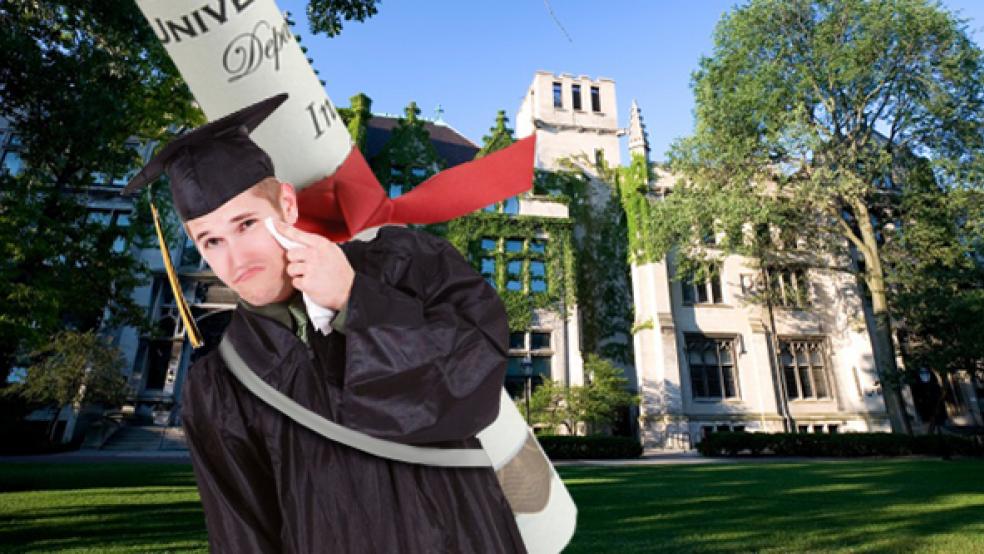Detroit did it. So did General Motors. Eastman Kodak, and US Airways. Even Mike Tyson.
But for college graduates drowning in student debt, bankruptcy has not been much of an option. The ability to discharge college loans was limited in a 1978 reform, and pretty much became close to impossible after a 2005 measure passed by Congress and signed into law by President George W. Bush.
This creates a problem for a U.S. population collectively struggling to repay about $1.2 trillion in student debt. The liberal Center for American Progress unveiled on Tuesday a potential fix—establish two types of college loans, one of which charges low interest rates, while the other can be written-off in the bankruptcy process.
The proposal by the think tank’s Joe Valenti and David Bergeron, a former top Education Department official in the Obama administration, would create a class of “qualified” student loans.
These federal and private loans would have low interest rates and income-based repayment options. They would be also be judged as “qualified” if the money went to institutions with a strong track record of placing grads in jobs. These types of loans could not be discharged by bankruptcy.
But the second class of loans that don’t meet these standards could be wiped away in bankruptcy proceedings.
“One of the objectives here is to have more good loans and more educational programs with sound outcomes,” explained Valenti, who is director of asset building at the center.
Creating two sets of loans would inject a degree of accountability at colleges and universities, according to the CAB. Unemployment rates for young graduates averaged 8.8 percent—about double the rate for existing graduates, according to an April analysis by the Economic Policy Institute. Wages for recent college graduates have dropped $3,200 between 2000 and 2012, the analysis noted.
Figuring out how to tackle the student debt issue remains in its opening stages. The number of undergrads receiving federal aid reached 57 percent in the 2011 academic year, up from 47 percent in 2007, the Department of Education said Tuesday. President Obama and Congress recently tied the interest rates on new federally subsidized Stafford loans to the yields on 10-year Treasury notes.
The Congressional Budget Office estimated this summer that such a move—depending on the accounting method—with either produce a $187 billion, 10-year profit for the government, or a $95 billion loss on the estimated $1.4 trillion in federal loans to be issued over the next decade.
RELATED: HOW GOVERNMENT STUDENT LOANS RUINED HIGHER EDUCATION
But the measure does little to address a fundamental mismatch between the debt required to finance a college degree and the job opportunities—or lack thereof—that await.
Bergeron explained that his proposal should help to bridge that divide, as qualified loans would be tied to employment outcomes. “Institutions that deliver services would become much more productive and in tune with the needs of employers,” he said.
That would help address the problem going forward. But it’s a partial solution to an unfolding crisis with impacts that could still reverberate for years to come. The existing student debt load is already set to impede home purchases and delay marriage and the start of families by millennials.
As a recent study by Congress’ Joint Economic Committee showed, the slow recovery from the 2008 financial meltdown has already put a sizable percentage of student loans into delinquency.




